Why did Marie Antoinette become the most hated European ruler?
Marie Antoinette's tragic story is a classic warning and a lesson in how the hate campaign and the duplication of false information led to one of the most famous deaths in history. Although the Queen was not an exceptionally good ruler, it is difficult to agree with the allegations that led her straight to the guillotine.
She came to France as a modest princess who struggled with loneliness for a long time and was unable to find herself in the complicated world of etiquette, glamor and scandals of the French court. Her marriage to Louis August of the Bourbon dynasty was of key importance to security and balance in Europe at that time, and the young queen soon became the main topic of rumors. Many legends have arisen around her life, which today are difficult to distinguish from the truth.
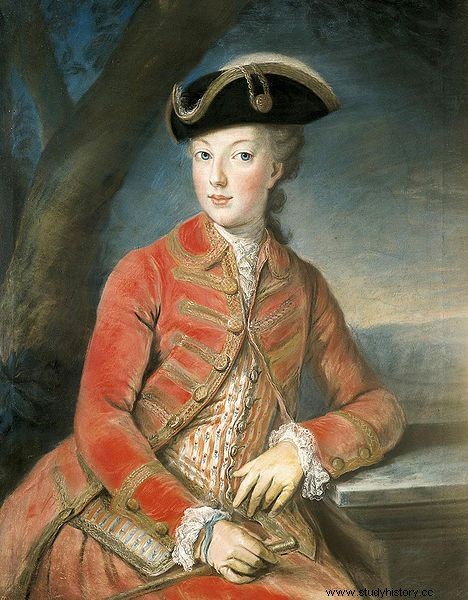
Young Marie Antoinette
Life on the eve of the outbreak of the French Revolution must have been quite a challenge for her, although she was not really interested in the crisis itself. The enormous economic problems of France were combined with a much more pronounced social crisis, feudalism was collapsing, and the ideas of the Enlightenment were dynamically developing. The Queen of France, locked in her chambers, surrounded by a wreath of court ladies, engaged in intrigues and balls, was not aware of it, however. For the average citizen of France, the most glaring at that time was the image of Louis XVI and his wife, who was blamed for the financial problems of the state.
Marie Antoinette was not a good ruler. For a long time, her involvement in public affairs was limited to protecting her friends for positions and inept caring for the interests of the Habsburg family. She quickly closed herself in a social bubble and focused on having fun. But was that enough to sentence the queen to death?
"The queen is a beautiful woman, but she is empty of mind"
The realities of life and the process of transforming a young woman into a dissolute ruler are wonderfully presented in Sofia Coppola's drama "Marie Antoinette". So we can trace the enormous loneliness, a grand wedding and the marriage problems of the young couple. The Queen found solace in entertainment.
Jan Baszkiewicz in the biography of Louis XVI wrote about the queen:
Marie Antoinette still does not arouse sympathy:she was reckless, haughty, insulted people, had bad moods and caprices, she could not contain her extravagance, she knew how to be vindictive. Regarding her mores, however, one would like to defend her.
And in fact - a large part of the rumors and the image of the queen itself, which has survived to our times, often differs from reality. And yet she has become one of the most hated women in history.
During a visit to France, Marie Antoinette's brother, the Austrian Emperor Joseph II, summed up her sister's actions quite sharply. He acknowledged that
The Queen is a beautiful woman, but her mind is blank. She can't find anything useful, but wastes time on trifles which, while quite innocent, are dangerous because they distract her mind.
"I put on roses and wash my hands in front of the whole world," wrote Marie Antoinette in 1770. Fashionable appearance and taking care of beauty began to absorb the energy of the queen completely. This enormous effort resulted in joining the ranks of the beauty icon, but it caused a great hatred of the poor people.
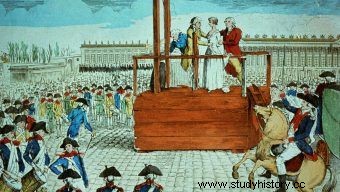
Execution of Marie Antoinette
Her absurd, provocative hairstyles that require many hours of styling have gone down in history. Some of them were even several feet tall! The queen's hair was adorned with fruits, feathers, jewels and various figurines. Hairstyles were abundantly powdered with wheat or corn starch. During the greatest famine, the agitated people believed that France lacked bread, because all the flour was used by the aristocracy to create sophisticated hairstyles. Of course, all the reluctance was focused on the queen.
The numerous balls and games in which the young queen was engaged were in contrast to the life of the average person. Anger grew among the people.
Madame Deficit
One of the most serious accusations against Marie Antoinette to this day is an unbridled lifestyle. The fancy dress, hairstyles and balls actually cost a fortune. However, it did not differ from a certain standard at court. The aristocracy lived in a kind of "bubble" and was not at all aware of the problems the country was struggling with. And there were plenty of them.
The queen was quickly labeled "Madame Deficit" and was mainly blamed for gaps in the state treasury. A huge scandal was the purchase of the Saint-Cloud Palace by Louis XVI for his wife for twice the value of the property. The treasury was already slowly emptying, and yet the queen had got her way.
The nail in the image coffin, however, turned out to be the so-called The "necklace scandal" which probably deserves a separate article. Mere deception turned into a state affair. Attempts were made to discredit the queen, but all manipulations were revealed during the trial. The Queen was acquitted, but the hatred of the people remained unchanged.
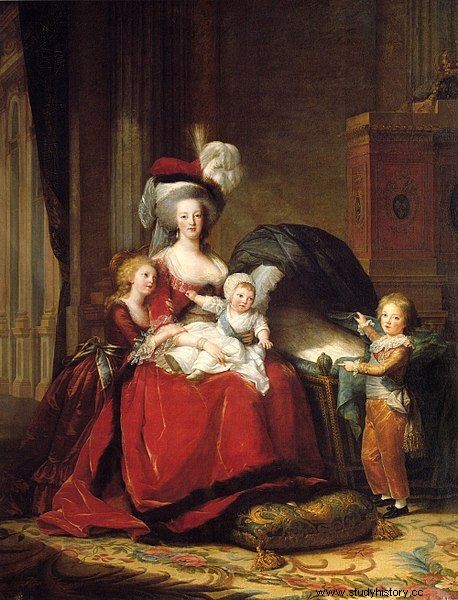
Maria Antonina with her children
The Queen of France became the heroine of pamphlets and caricatures. In one of them, Marie Antoinette was depicted as an ostrich with a woman's head, declaring: "I swallow gold and silver without any problems, but I will not swallow the constitution" .
Although the lavish lifestyle deepened the alienation of power and the hatred of the starving inhabitants of the country, it is worth emphasizing that the court's expenses (though completely unnecessary!) Were only a drop in the ocean of France's financial problems on the eve of the revolution. The greatest burden was the handling of the loans that Louis XVI took for the fight against the English during the US War of Independence and keeping the army abroad during long wars.
"Let them eat cookies"
An anecdote that Marie Antoinette, informed that the people of France did not have bread, would reply, "Let them eat cookies!" (in another version of "Let me finish my cookie"), it should be put between the fairy tales. The information about this statement was recorded by Jean Jaques Rousseau in 1769, when the Austrian woman was not yet in France, and he attributed the words to the "Grand Duchess". in all kinds of circumstances.
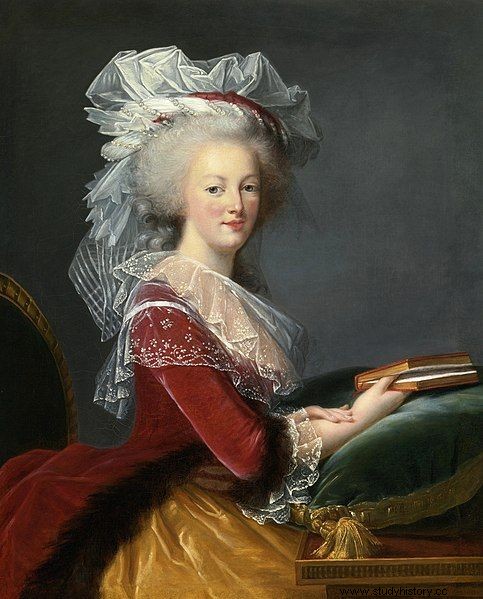
Marie Antoinette lived in a real "bubble". She was not aware of the crisis that led to the revolution
Therefore, it is worth remembering that the lavish lifestyle of the court was offensive, especially since France had been plagued by crop failures, cattle plagues and droughts for years. The Queen was ignorant and carefree. During the crisis, she spent enormous sums and organized lavish balls. The aversion to it was justified, but it was of a more image-related nature. The queen's expenses did not lead to the ruin of the state.
The queen's life was radically changed by the French Revolution. She and her family were placed in Temple.
A worthy death of "Widow Capet"
Marie Antoinette, like her husband, was brought before the Revolutionary Tribunal which was a real parody of the judiciary. The Queen was accused of conspiracy against France, high treason, murder, and even… incest with her own son! There was no end to the humiliation. The Queen was called the "Austrian whore", but she kept her class until the end.
She appeared before the Tribunal with great courage and dignity, she did not allow herself to be provoked. One of the trial witnesses commented:
One could see the sadness on the faces of honest spectators and the madness in the eyes of the crowded crowd of men and women with which the room was deliberately filled - madness that sometimes gave way to a feeling of regret and admiration. The accusers and judges failed to hide the anger or involuntary confusion they felt in the face of the Queen's noble steadfastness.
The sentence is predetermined. The Queen, like Louis XVI before that, was to go to the guillotine. On the day of her death, she wrote in the prayer book, “God, have mercy on me! I have no more tears to cry for you, my poor children. Adieu. Adieu! ”
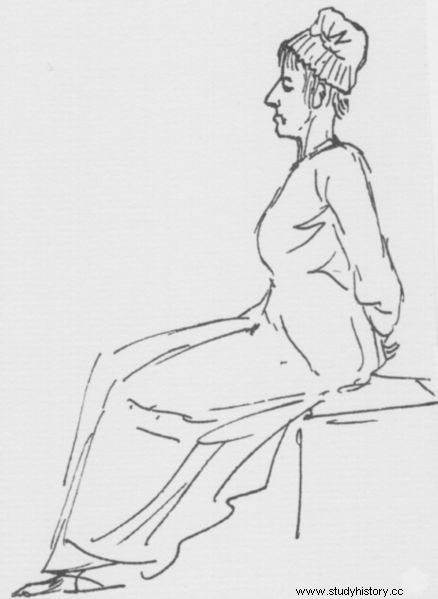
Marie Antoinette on the way to the guillotine
One maid was assigned to help her before the execution. Dignity was not respected. Apparently, while changing the dirty underwear (the queen was bleeding heavily then), she was constantly watched by a guard who refused to let the humiliated ruler be covered by a helper, despite a polite request, "For the sake of decency, monsieur, let me change my underwear in private."
The executioner's son, who had previously been at the beheading of Louis XVI, cut the queen's hair and bound her hands. A miserable wagon was waiting for the "widow Kapet", which was used to transport ordinary criminals. Marie Antoinette must have been surprised by this sight, as Louis XVI was transported to his execution in an elegant carriage.
She spent all the way rearward facing. Crowds of people came to see the execution. G she accepted the visions and insults of cheerful people with peace. She was also calm when it turned out that the execution turned into a kind of festival. Fruit and wine were sold in the square, there was an excited crowd everywhere.
Her last words have also gone down in history. When she silently entered the scaffold, she accidentally hit the executioner. She would then say "Pardon, Monsieur. I didn't want to do that. " . Moments later, her head fell off and the executioner lifted her towards the audience screaming in excitement.
